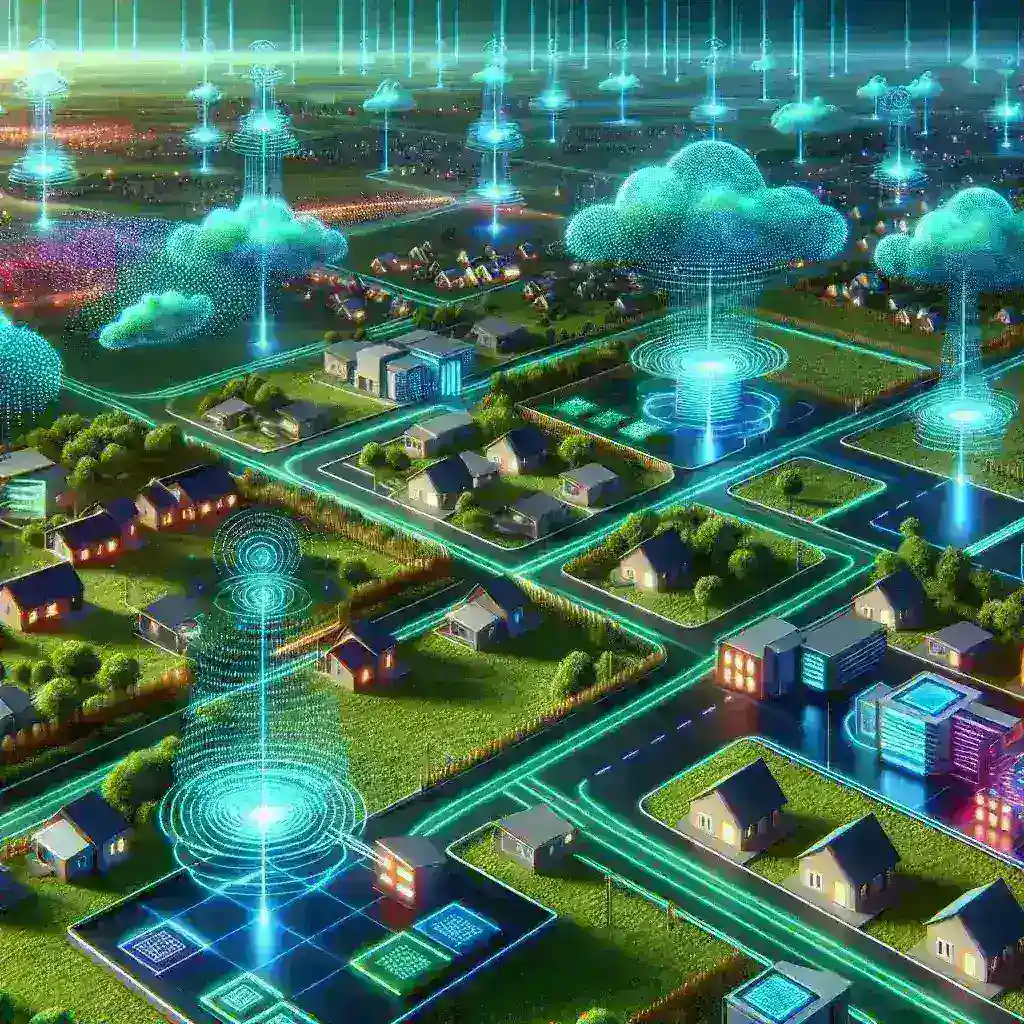The Rise of Edge Computing in Suburban Regions
In today’s fast-paced digital world, the demand for quicker data processing and reduced latency has never been greater. As the Internet of Things (IoT), artificial intelligence (AI), and data-driven applications proliferate, organizations are increasingly adopting edge computing solutions. This technology facilitates the processing of data closer to the source, significantly improving response times and bandwidth usage. One of the most notable advancements in this field is the deployment of micro data centers in suburban areas, which serve as crucial components of modern edge computing infrastructure.
Understanding Micro Data Centers
Micro data centers are compact, modular data centers that can be deployed quickly and efficiently to meet specific local needs. They consist of servers, storage, cooling systems, and networking devices, all housed within a small footprint. These facilities can be installed in various locations, including retail spaces, manufacturing units, and even outdoor environments. Their primary aim is to process data locally rather than relying solely on centralized data centers.
The Benefits of Micro Data Centers
- Reduced Latency: By processing data closer to the end-user, micro data centers minimize the time it takes for data to travel, resulting in faster application response times.
- Enhanced Reliability: Localized data processing means that even if connectivity to a central data center is lost, services can continue to function seamlessly.
- Scalability: Micro data centers can be easily scaled up or down based on demand, allowing businesses to adapt to changing needs without significant investment.
- Cost Efficiency: With reduced energy consumption and lower operating costs, micro data centers provide a financially viable solution for many organizations.
Historical Context of Edge Computing
The concept of edge computing is not entirely new; it has been around for several years, gaining traction with the advent of cloud computing. Early implementations were primarily focused on content delivery networks (CDNs) that cached data closer to users. However, as the volume of data generated by devices increased, the limitations of traditional centralized data processing became apparent.
With the rise of IoT devices, which generate massive amounts of data in real-time, the need for edge computing solutions intensified. Companies began to explore how localized data processing could improve operational efficiency, reduce costs, and enhance user experiences. As a result, micro data centers began to emerge as a practical and effective solution, particularly in suburban areas where traditional data center infrastructure was lacking.
The Future of Edge Computing and Micro Data Centers
Looking ahead, the future of edge computing and micro data centers appears bright. As 5G technology becomes more widespread, the opportunities for deploying micro data centers will expand exponentially. 5G offers higher speeds, improved connectivity, and lower latency, making it easier for micro data centers to support increasingly demanding applications and services.
Predictions for Expansion
Industry experts predict that by 2025, over 75% of data generated will be processed at the edge rather than in traditional centralized data centers. This shift will not only lead to increased investments in micro data centers but will also drive innovation across various sectors, including healthcare, retail, and smart cities.
Healthcare Applications
In the healthcare sector, for example, micro data centers can facilitate real-time data processing for telemedicine applications, remote patient monitoring, and medical imaging. By enabling faster access to critical patient data, healthcare providers can make more informed decisions, ultimately improving patient outcomes.
Retail and Smart Cities
In retail, micro data centers can enhance customer experiences through personalized marketing and faster transaction processing. Moreover, in smart cities, these data centers can support traffic management systems, environmental monitoring, and public safety initiatives.
Challenges and Considerations
While the expansion of micro data centers presents numerous advantages, there are also challenges to consider. Some of these include:
- Security Concerns: With data being processed locally, the risk of data breaches and cyberattacks increases. Organizations must implement robust security measures to protect sensitive information.
- Management Complexity: Deploying multiple micro data centers across various locations can create management challenges. Companies need efficient monitoring and management tools to ensure optimal performance.
- Regulatory Compliance: Organizations must navigate various regulations regarding data privacy and security, which can vary by region.
Conclusion
As edge computing continues to evolve, the expansion of micro data centers in suburban areas represents a significant shift in how organizations process and manage data. By enabling localized processing and enhancing connectivity, these micro facilities are driving innovation and improving operational efficiency across various sectors. While challenges remain, the benefits of adopting edge computing infrastructure are clear, paving the way for a more responsive and efficient digital landscape.


Leave a Reply